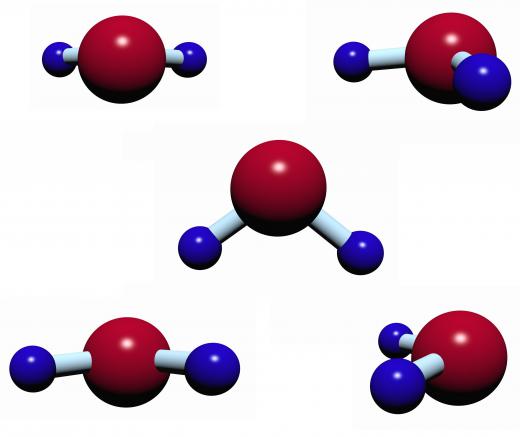What is a Molecular Sieve?
A molecular sieve is used to dry or absorb gases and liquids. Molecular sieves are made of porous materials, usually an aluminosilicate compound called zeolite, and are used to separate substances on a molecular level. Primarily used as a desiccant, or drying agent, these sieves are also often used in the petroleum industry to purify gases.
Just like a sieve might be used to separate rocks from sand, a molecular sieve separates larger molecules from smaller ones. For example, water molecules have a molecular radius of 0.193 nm while a molecule of acetone has a radius of 0.308 nm. Pouring an acetone solution into a molecular sieve would result in the smaller water molecules passing through the sieve while the larger acetone molecules remained, thus drying the alcohol. When two molecules are the same size, molecular sieves can also separate molecules based in the molecules' polarity. The more polar molecules will be absorbed as if they were the smaller molecules.

Unlike sieves that separate rocks from sand, molecular sieves do not allow the smaller molecules to simply pass through them. Instead, those molecules are absorbed by the sieve. The empty spaces in the sieves structure, the pores, hold those smaller molecules, so a sieve's effectiveness not only depends on the size of the pores but on how much empty space is available inside the sieve's structure.
Molecular sieves can absorb about 24 percent of their weight. Once the water is absorbed into the porous holes and the dried or purified materials retrieved, the water can be removed in different ways. Since heat does not change a sieve's molecular structure, water is often removed by heating the sieve to 482°F (250°C) for two hours and then allowing it to cool with minimal contact with humid air.
Crystalline in structure, the porous material in a molecular sieve has completely uniform pore sizes. These sizes, however, differ depending on the type of sieve. There are several types, including insulated glass molecular-sieves, types 3A–5A, and type 13X.
Insulated glass molecular-sieves are used specifically to make insulated glass. They prevent water build up inside the surface of the glass. 3A and 4A sieves are universal drying agents. 3As are used mostly to dry or dehydrate hydrocarbons. This is the type of sieve that would be used to dry acetone in the earlier example. 4A sieves are used in closed systems, like electrical components and drug packaging, to ensure dryness.
AS FEATURED ON:
AS FEATURED ON:











Discussion Comments
Very good! Please explain about the different kinds of molecular sieves.
Post your comments